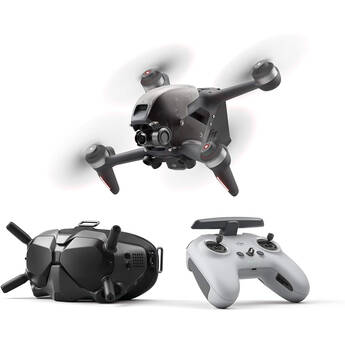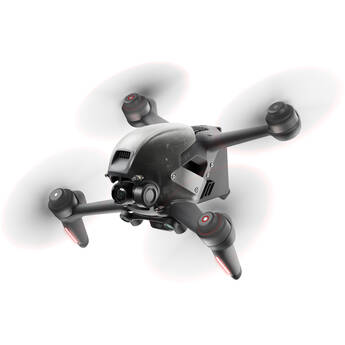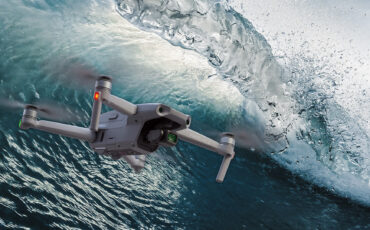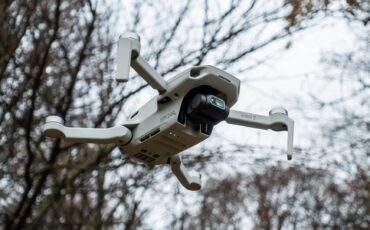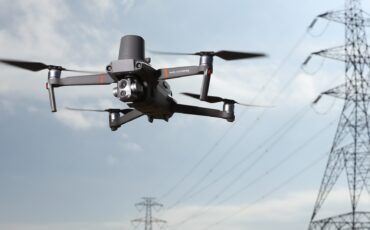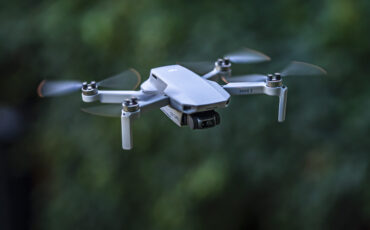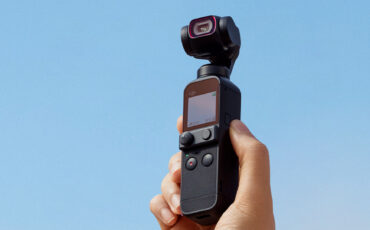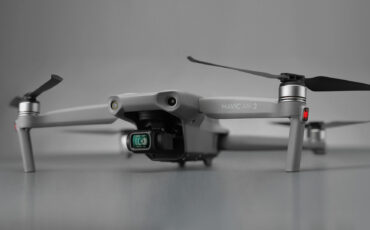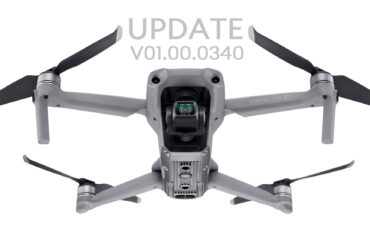DJI FPV Review – First Look at the First-Person-View Drone
DJI just announced the DJI FPV, their first ready-to-fly first person view sporting drone. I took it for a first spin and here are my impressions from a filmmaker’s perspective in our DJI FPV Review.
In case you missed our post with all the technical details of the new DJI FPV drone, click here to read it. Here’s let’s focus on my hands-on first-look review of the device.
Flying an FPV drone – very different from “mainstream” drones
If you’ve ever flown a drone, it’s most likely you flew a DJI Mavic or Phantom drone – DJI’s normal “mainstream” drones. Flying the DJI FPV drone is a quite different experience: FPV stands for first-person-view, and it’s a completely new design for DJI, with a very different purpose in mind: sports flying, at high speeds, with a completely freedom of movement in all axis, to make movements you haven’t seen before. And yes, you can fly this drone only with goggles.
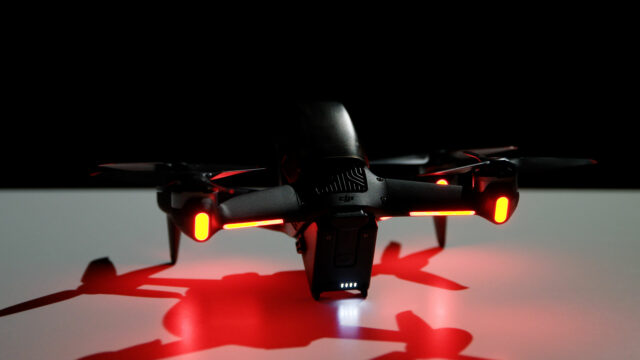
FPV drones are notoriously hard to fly and take many, many hours to master, involving lots of crashes in the process. Most FPV drones are self-built and often very lightweight (especially Cinewhoop drones), which makes even hard impacts often not as destructive as on heavier drones. Now DJI’s FPV drone is not exactly lightweight though – it weights almost 800 grams or 1.75 pounds, which is partly because of a large battery that allows it to fly for up to 20 minutes but of course also bears the question – how can you learn how to fly this without destroying it almost immediately?
Philip Bloom's Cinematic Masterclass
An entry-level FPV drone with various flying modes
It turns out, DJI really thought about this. The DJI FPV drone seems to be the perfect entry-point for “normal” drone pilots like me into the FPV space. Believe me, I have no clue on how to fly an FPV drone, but I am confident that with this drone I can learn it.
First of all, the DJI FPV drone can be flown like a normal drone as well. That’s not possible with other FPV drones. This one can be set to the “normal” mode and you’ll have all the controls and behaviours you are used to from a Mavic drone. The drone also has features like return-to-home, take-off and landing assistance, and front sensors to avoid collisions in N mode.
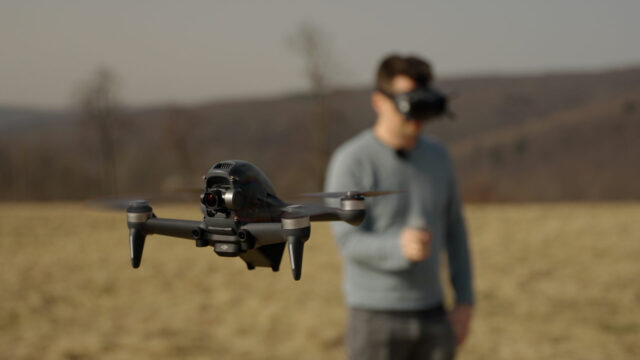
The “S” mode might sound familiar from Mavic drones as well, however in the DJI FPV drone it’s a hybrid mode of normal flying with some of the freedom of the manual FPV mode in terms of movements.
And then there’s the M mode – you should really only touch this if you know how to fly FPV drones! Otherwise you’re going to crash very quickly. FPV controls work very differently from normal drone controls.
Learn FPV flying with DJI Virtual Flight app
You might think, that still doesn’t answer how you can learn flying in this mode? Right. Well, as I mentioned, DJI thought about this … and made their FPV drone the perfect bridging drone of people coming from normal drone flying to FPV. DJI introduced the DJI Virtual Flight app (Apple App store link), which is essentially a computer game for your DJI goggles and remote controller to train flying using the Unreal engine, without actually having to crash your drone in real life. You simply connect the goggles to the iPhone (the app is currently iOS only, unfortunately), and start up the goggles and the controller with the app, and then you can “fly” using the real controller, in all the different modes.
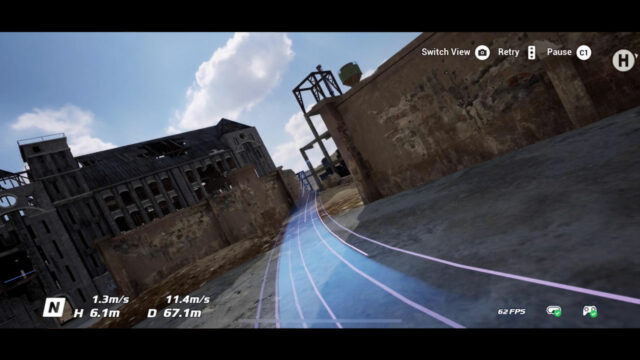
Flying an FPV drone manually is not easy at all and I will only touch the manual mode on the actual drone once I have mastered flying in the Virtual Flight app.
Using DJI Goggles v2 to fly the DJI FPV drone
First of all, the flying experience is somewhat different when using goggles over the normal smartphone-screen controller that you would use with the Mavic drones. These aren’t VR goggles, meaning it doesn’t change what you see depending on how you turn your head, but they give you an undistracted view of the image the drone is transmitting, it’s like looking at a huge cinema screen. That also means, no distractions from incoming phone calls like on the Mavic drones, no trouble seeing the image when standing in sunlight, and so on.
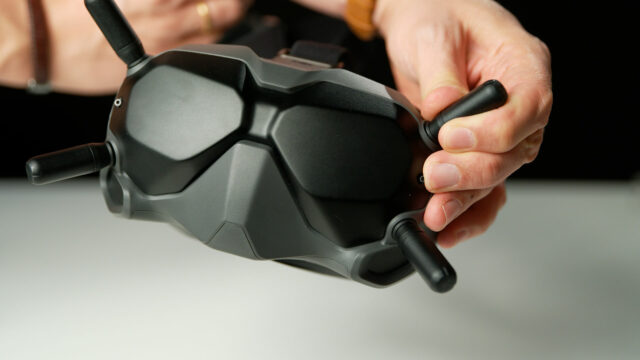
One thing that could be improved about the googles is the fact that it’s using an external battery that is connected by a power cable. So of course it’s one more thing to charge and one more thing to forget at home, and having a cable tangle down from your head isn’t great either. But at least you can use other batteries with a USB-C connector if it’s in the same voltage range, so that’s a plus.
I never had any transmission drop-outs when flying the drone and using the goggles, but I was flying in clear weather and not too far away. Their resolution is 810p at up to 120 frames per second, and the latency is very low, meaning it’s fast enough to do fast maneuvers with the drone and still be able to react in almost realtime.
DJI FPV drone speed & behaviour
Talking about fast, the DJI FPV drone can fly up to a whopping 140 kilometers per hour and go from 0 to 100 kilometers per hour in 2 seconds in M mode. It’s absolutely insane. But you already feel its power in normal and sports modes as well. It’s a different flying experience.
It also behaves differently: the drone will not keep the horizon level when flying fast or making turns, typical for FPV drones. In sports and manual modes you can also flip and make other crazy moves of course.
Wide field of view
The field-of-view is very wide at 150 degrees. If you don’t enable distortion correction in the menu, you will actually also see the rotors in shot most of the time. So I recommend to enable distortion correction for the drone recording, but you can keep it off for what you see in the goggles view simply to have a wider view for navigating.
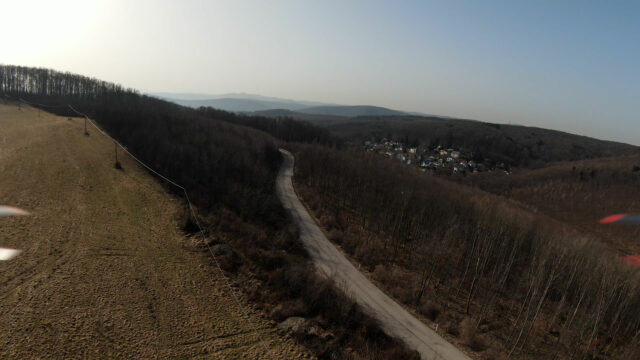
DJI Remote Controller vs. the new DJI Motion Controller
The remote controller is what you are used to from the Mavic series, minus the phone holder as you’re using the goggles instead. You can fly in normal, sports and manual modes with the remote controller. For the manual FPV mode, you can also stop the sticks from recentering, which is typical for these drones. Again, only use the manual FPV flying mode if you know what you are doing!
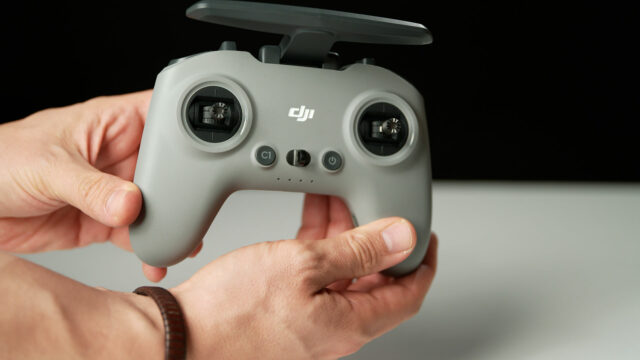
What’s actually much more exciting is the new motion controller. This is an optional accessory for the DJI FPV drone, but it allows for a completely new, very intuitive way of navigating a drone. It can be used with Normal and Sports mode and has a gyroscope to sense its position in space. You move it left, the drone turns left, you move it right, the drone turns right. In the goggles, you will see a white circle in the middle to see where you’re headed when you use the motion controller, and pressing the trigger will move the drone forward faster or slower, depending on how hard you press. It’s a way of navigating that literally takes no experience as it’s so intuitive. I handed the control to my wife Anita when we were out trying the drone, and she has never flown a drone before … and had no issues whatsoever navigating the FPV drone with the motion controller.
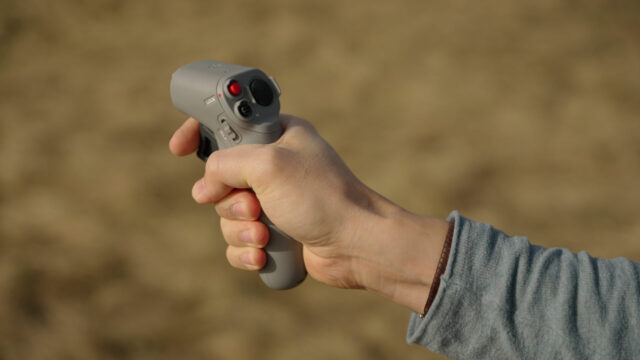
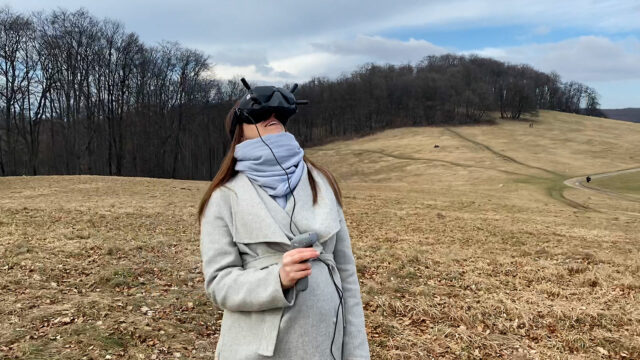
Is the Motion Controller the future?
I predict that the motion controller will be the future for many drones in the future, especially the more mainstream ones – if they figure out how to combine it with a smartphone I guess, because you can’t always use goggles. It’s a lot of fun navigating like this and you don’t need to learn a lot of coordination between your two thumbs like you do with the normal remote controller – with the motion controller, you can also make nice turns intuitively. It’s not as versatile as the remote controller – you can’t use manual FPV mode of course, and I don’t think you can go straight up or down or sideways without turning into the direction you want to head to, but that only makes it less dangerous for beginners as you are actually always looking into the direction you’re headed towards.
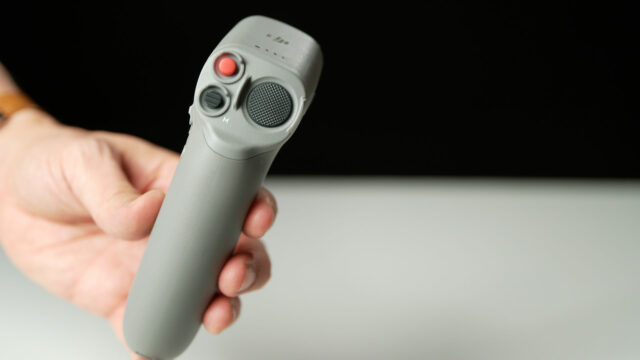
DJI FPV image quality from a filmmaker’s perspective
Last but not least let’s talk about image quality and how useful the DJI FPV drone is for filmmakers. The drone has deeper image controls than some drones from the Mavic line, so you can change from standard to D-Cinelike to get a “log-like” image that can actually be graded in post. What’s also great is that the more efficient and higher-quality H.265 recording is available on top of H.264 compression. The drone records at 120Mbps, which is decent at H.265, however it only supports 60 or 50p right now. That means no 24p, 25p or 30p mode in 4K, which are more typical framerates to use for “filmic” movement. I think this might be due to the fact that the DJI FPV isn’t primarily targeted at filmmakers and that the super fast movements and turns the drone is capable of doing aren’t exactly jitter-free in lower framerates. The drone allows you however to set camera parameters like shutter speed, ISO and so on independently, but it has a fixed aperture. Because I didn’t have an ND filter for the drone, I decided to fly it in automatic exposure mode, so please excuse the exposure shifts in the test footage I acquired.
Image stabilization – no 3-axis gimbal, but RockSteady EIS
One thing to note, when going straight up or particularly down in a vertical line, the drone isn’t totally steady and shows some jitter. In fact, the drone doesn’t have a three-axis gimbal because according to DJI, these kinds of gimbals are not compatible with fast movements. So the DJI FPV only comes with a one-axis gimbal and adds DJI’s electronic image stabilization called RockSteady to counteract the lack of the other two axis. Of course that can never be as good as an actual three axis gimbal, but it’s a good replacement – normal FPV drones generally don’t have any kind of stabilization.
However, you don’t see the RockSteady stabilization in the image through the goggles while flying, but it is applied to the recorded image – I was suprised how stable some of the movements looked when I played them back after my flight.

Is the DJI FPV a drone for filmmakers?
So it sounds like a lot of compromises in filmmaking, right? Yes, BUT … the kinds of movements this type of drone is capable of making is something you simply can’t achieve with any other of DJI’s drones. That also translates in the kind of footage you can get, of course.
If you are not planning to put in the kind of work and training you need to master flying the DJI FPV drone – with the Virtual Flight app and the drone itself – it’s not going to pay off buying this drone over, let’s say, a Mavic Air 2 or Mavic 2 Pro drone, as a filmmaker. If you only fly in normal mode, you would get a wider angle of view than with other drones, less stabilization because of the lack of a three-axis gimbal, and so on. I definitely can’t use it to its full potential yet as I have yet to master not crashing it in manual FPV mode – but I’m determined to get better!
So let me put my goggles back on to train in the Virtual Flight simulator! I can’t wait to be able to share more impressive footage with you from the DJI FPV drone. It’s definitely the most fun I had flying a drone in years.
What do you think about the DJI FPV drone after my review? Are you thinking about getting one? Let me know in the comments below.
